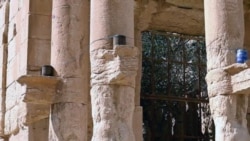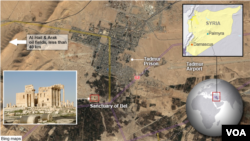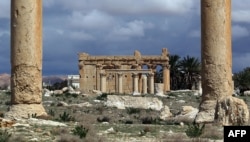Islamic State militants in Syria committed an "intolerable crime against civilization" by destroying the Temple of Bel, one of the ancient world's most iconic monuments, the head of the U.N. cultural agency said Tuesday.
The militants used explosives to destroy the two-millennia-old temple in the ancient city of Palmyra on Sunday. Witnesses described a huge blast and the destruction was later confirmed by U.N. satellite images.
The militants claim ancient relics and sites of worship promote idolatry. They have blown up several ancient treasures in Iraq and destroyed a smaller Palmyra temple, Baalshamin, in late August.
Cultural heritage
Dr. Nedal Haj Darwish at the Department of Archaeology at Iraq’s University of Sulaimani told VOA's Kurdish service that militants of the self-claimed Islamic State group use religion as a pretext to destroy statues. “But in reality, they want to eliminate the cultural heritage of the area.”
UNESCO chief Irina Bokova said Tuesday 4,500 years of history will never be erased. “The power of culture is greater than that of all forms of extremism and nothing can stop it,” she added.
She said her agency will try to protect "all that can be saved'' from destruction by IS.
History
The Temple of Bel, dating back to 32 AD, displayed a unique merging of ancient Near Eastern and Greco-Roman architecture. Dedicated to the Semitic god Bel, it was considered one of the most important religious buildings of the first century. The temple consisted of a central shrine inside a colonnaded courtyard, with a large gateway within a complex that has other ruins, including an amphitheater and some tombs.
Dr. Darwish says the world should act more aggressively to stop IS from destroying cultural treasures as the group will try to destroy all historical sites that it deems represent non-Islamic icons or values.
Palmyra was an important caravan city of the Roman Empire, linking it to India, China, and Persia. Before the outbreak of Syria's conflict in March 2011, the UNESCO site was one of the top tourist attractions in the Middle East.










